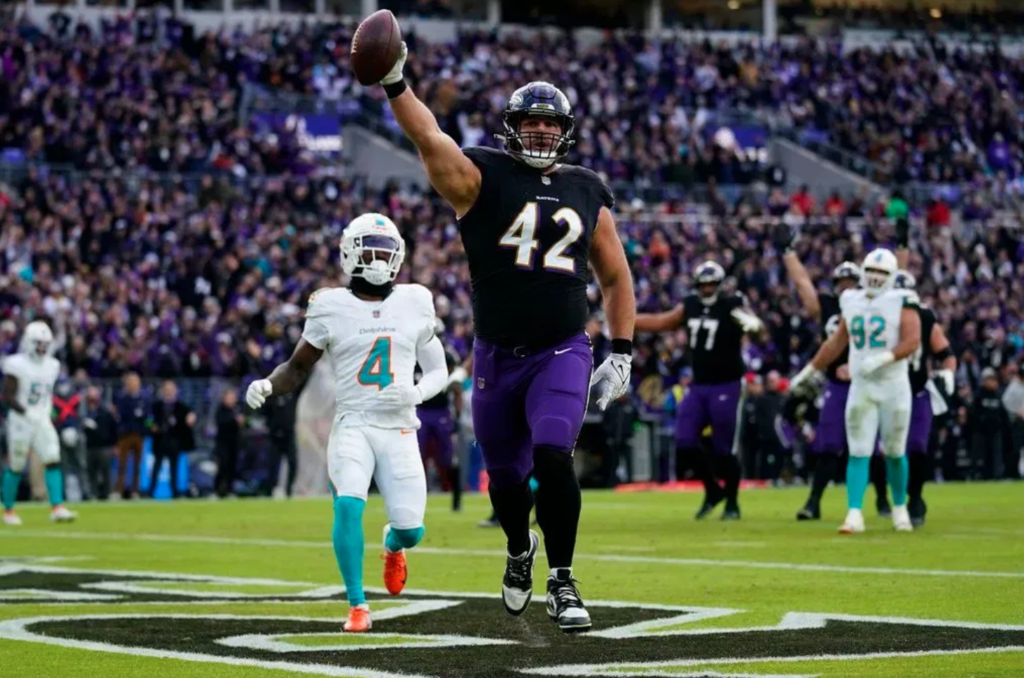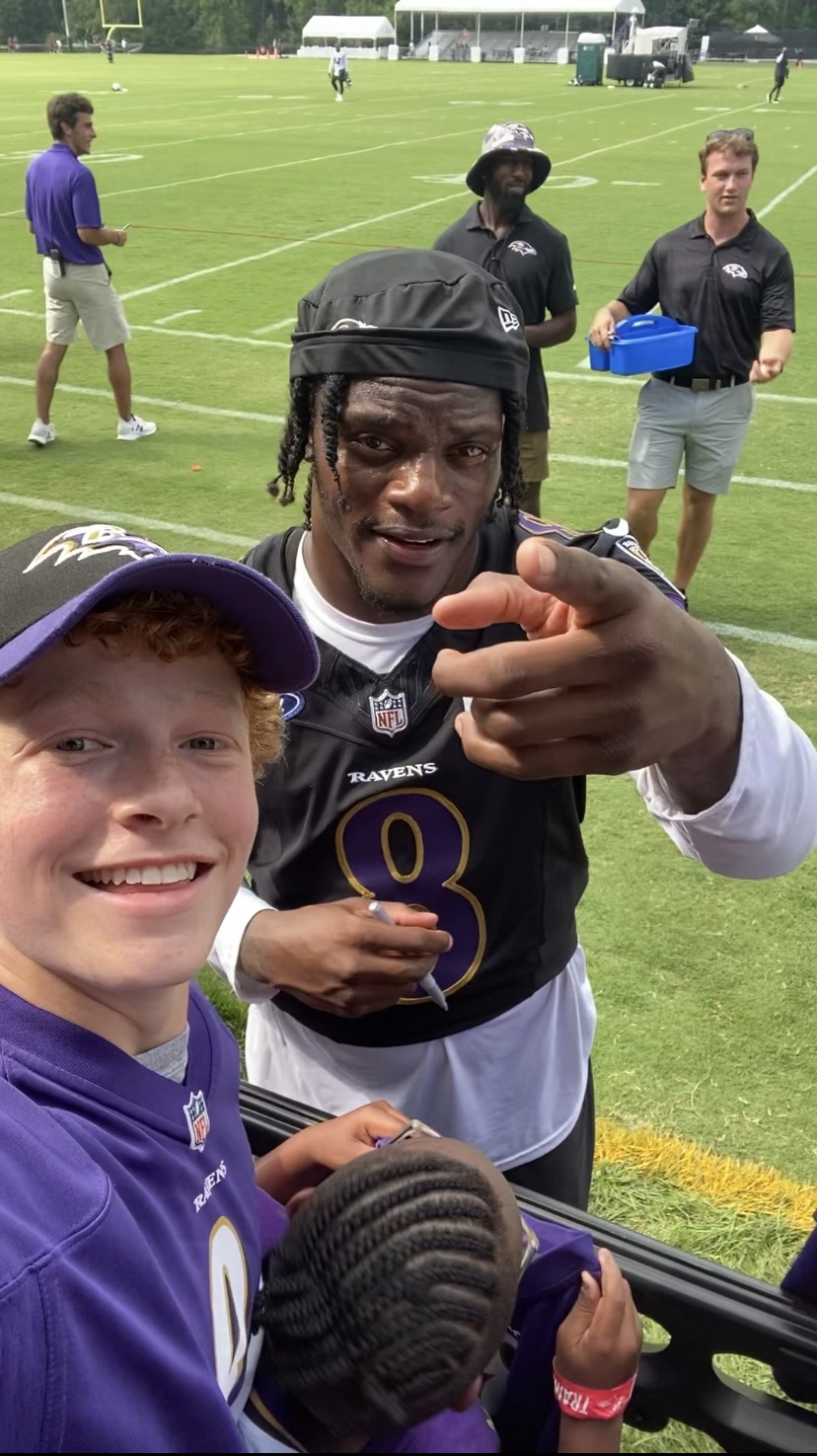How the Ravens Foiled the NFL’s No. 1 Offense
HOW THE RAVENS FOILED THE NFL’S NO.1 OFFENSE – The Miami Dolphins entered M&T Bank Stadium on Sunday a Super Bowl contender, poised to capture the No. 1 seed in enemy territory.
With the league’s highest-scoring offense overflowing with track stars, how did Miami get stomped, and held to less than 20 points for only the third time this season? Because our Mike is better than yours.
Much was made about the clash of play callers before the game. Miami’s Mike McDaniel, and Baltimore’s, Macdonald, are two of the trendiest names in the sport. And they have history. In Week 2 of 2022, Macdaniel embarrassed the Ravens’ defense, exploiting their young secondary en route to an improbable 21-point comeback.
Related: Nate Previews Every Game for Week 18
On Sunday, Macdonald took round two. He did so by relying on split safety defenses, rather than single highs to force McDaniel to play patient.
A Key Tradeoff
To understand MacDonald’s defensive strategy, we first must understand the differences between a split safety defense and a single high. Take these two plays from the first drive, for example:
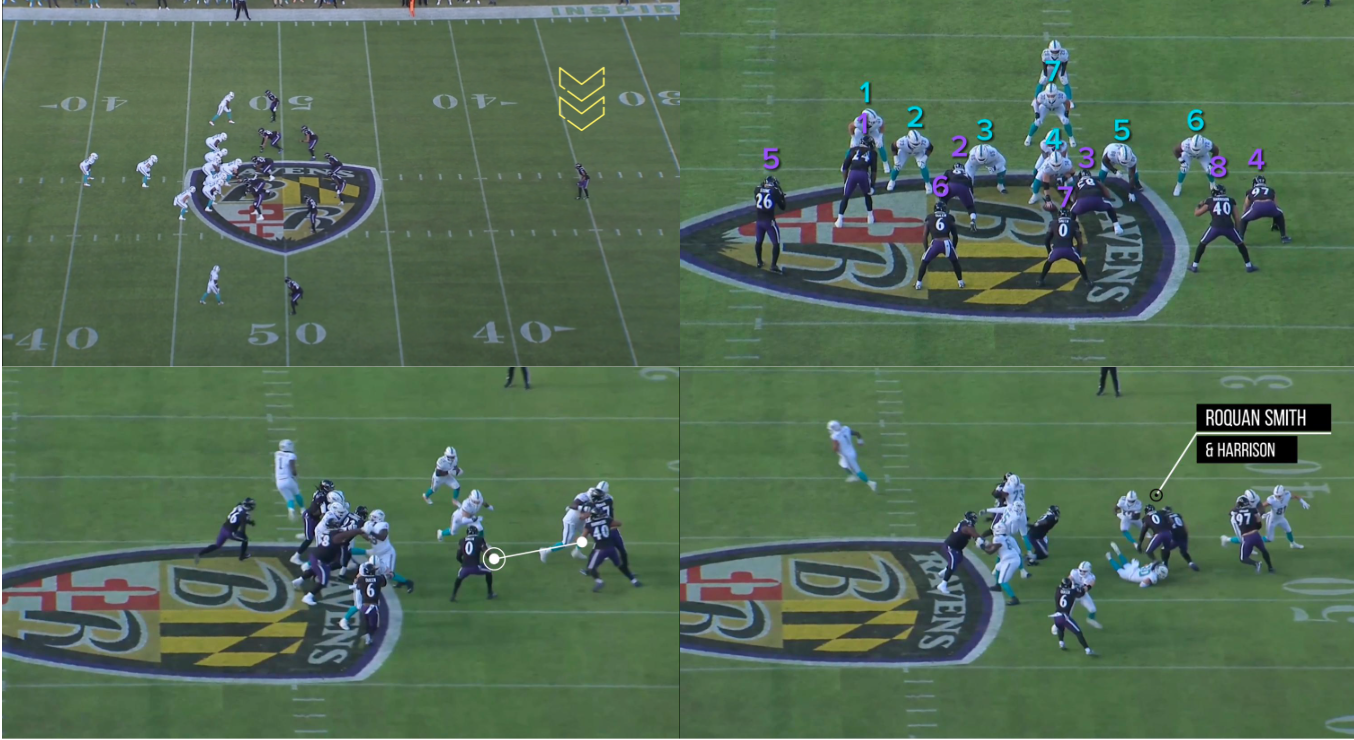
The run game numbers advantage of a single high defense is traded for more favorable position against the passing game in a split safety alignment.
This play, from later in the drive, depicts the difficulties of stopping the run from a split safety look.
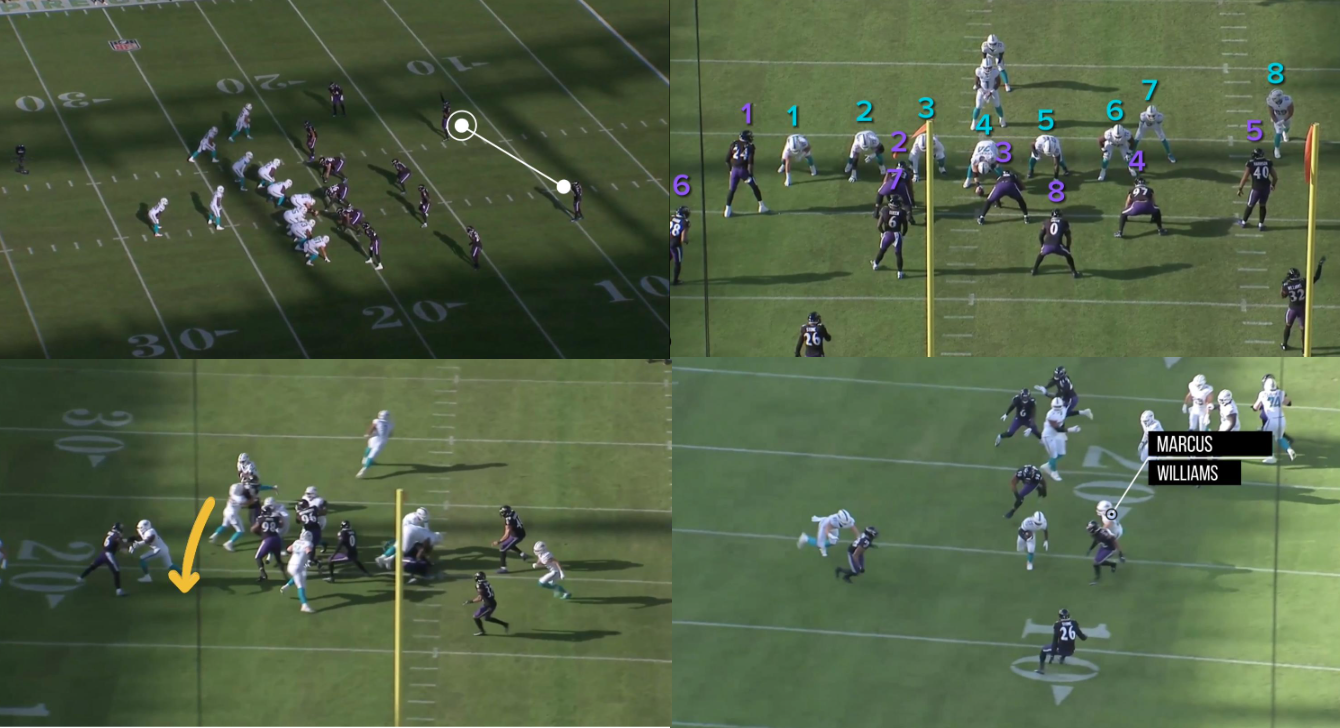
Taking Away the Pass
Macdonald is known for his split safety defenses, disguising his defense’s coverages and sending simulated pressures. But how was this sustainable if it left the Ravens vulnerable in the run game?
It worked for a few reasons. The first is that the Ravens have a special front seven. Even when Miami had numbers in the run game, Baltimore’s D-line and linebackers proved able to shed the blocks and break McDaniel’s math.
The second is that the Ravens’ safeties are fantastic as well. Even without their best safety, Kyle Hamilton, the Ravens could rely on Williams and Stone to fly up and get their noses dirty in the run game. But no amount of talent will be able to defy the laws of mathematics forever.
Baltimore held Miami to 4.8 yards per carry when aligned in split safety defenses, which is better than expected, but hardly a smothering performance. Which leads us to the third reason why these defenses worked: McDaniel was impatient.
McDaniel faced pre-snap split safety defenses 46 times on Sunday.
That means 46 times he had an advantage in the run game if he wanted it. So how many times did he run against these looks? Fifteen. Now Miami got in a hole early, but that’s no reason to try and air it out two out of every three plays. Just because the Ravens wanted to make it a shootout doesn’t mean you have to oblige.
In fact, it would seem that establishing the run game and slowing down the pace of the game would be a smart way to counter a red-hot Lamar Jackson. Miami became predictable and played right into the Ravens’ talons.
Mcdaniel’s Lack of Variation
It wasn’t just McDaniel’s tendency to pass the ball that was repetitive.
The offense’s personnel groupings became stale. McDaniel’s opening touchdown drive was beautifully balanced, deploying 11 personnel five times and 21 personnel three times.
But after Baltimore extended their lead to 8 points, McDaniel went into an 11-personnel rut. He deployed 11 personnel on nine straight plays and threw on all but one of them. Tagovailoa threw an interception, the Ravens went up 15 at the half, and the game was never the same after that. McDaniel felt like he had to pass the ball to get back into the game, and he trusted 11 personnel more than any other to get the job done.
But a little variation could have gone a long way. Miami drives that deployed any formation other than 11 personnel for at least two plays ended in points 80 percent of the time. While drives that did not mix up personnel more than once were 0/5 in scoring.
Macdonald
As McDaniel became more predictable, so, too, did Mike Macdonald. After running single high coverages, disguised or otherwise, 12 times in the first half, he ran them only four times in the second.
Macdonald had gotten into trouble in the first half with single high defenses, allowing Miami’s two biggest gains of the half – a 45-yard Achane run and a 25-yard Tyreek fade ball. Hill’s catch illustrates the dangers of running a single high defense.
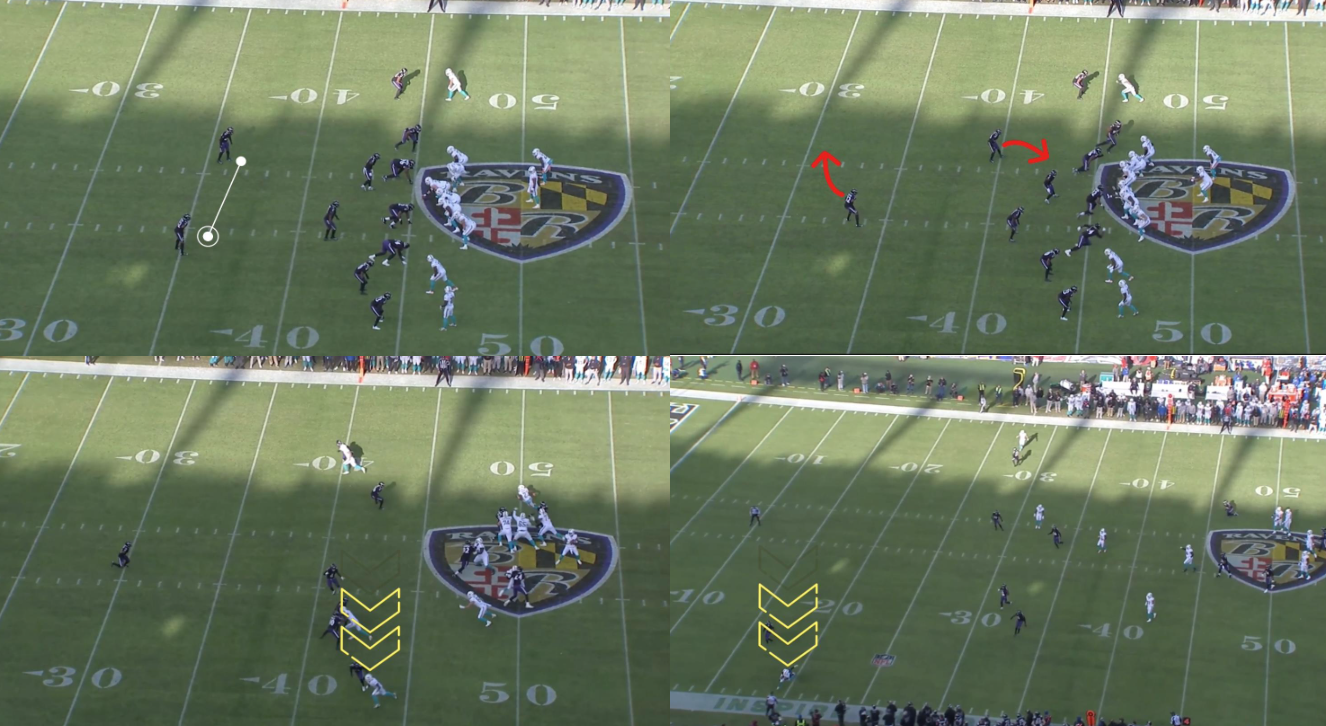
Daring Miami to Run
Whether those plays were the reason Macdonald stopped running single high defenses or not, he laid off.
Fortunately for him, Miami didn’t seem too interested in challenging Baltimore’s safeties through the run game. Even though the Dolphins were ripping off 8 yards per carry against split safety looks out of 11 personnel, they only attempted four such carries in the game.
Instead, they opted to throw the ball into defenses positioned to defend the pass. So much of Tua’s production comes from throws over the middle, and having two safeties looming over every play muddies his passing lanes.

Just as the split safety defenses didn’t entirely shut down the running game, they also had more of a limiting effect than an eviscerating one on Miami’s passing game. Tua posted a 91.52 passer rating against the Ravens’ split safety defenses.
That isn’t an awful number. It’s right on par with the league average (91.5), but it’s a 11.5-point drop from his typical 103.0 rating. And when Lamar Jackson is posting perfect passer ratings and throwing for five touchdowns, that’s more than enough.
The Dolphins Aren’t Done
It must be acknowledged that the Dolphins were without Jaylen Waddle in this game. Getting him back will certainly boost their offensive firepower. Even against split safety defenses, there are opportunities for big plays.
If Miami had stayed with the run game and forced Baltimore’s safeties to fly up and fill, a play-action Tyreek bomb would’ve followed shortly after. This game isn’t the blueprint for stopping Miami. The Dolphins just ran into a supremely talented defense with one helluva coordinator.

